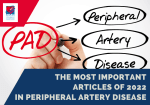Heart failure is strongly associated with malnutrition or poor nutrition, which has been linked to increased mortality during follow-up. We know that mitral regurgitation causes progressive heart failure and affects nutrition. The COAPT Study has demonstrated the benefits of edge-to-edge treatment in mitral regurgitation when combined with comprehensive medical treatment and maximum tolerated doses. However,...
Calcified Nodules and the Importance of OCT Categorization prior PCI
TLR associated factors in patients with calcified nodules. Patients with complex cardiomyopathies undergoing percutaneous coronary intervention are increasingly common, as is the case for calcified lesions and calcified nodules (CN). Procedure complexity not only involves planning, but also establishing patient prognosis, taking into consideration the fact that most target vessel events occur at long term...
AQCA Study: Pre-PCI Virtual QFR for Planning PCI vs. Conventional Angiography
Several studies have used physiological assessment after a percutaneous coronary intervention (PCI) to improve clinical outcomes. However, results are not entirely conclusive. The limitations of using these physiological assessment methods are the need for extra measurements with increased procedure time, more radiation, and more contrast, which in turn leads to higher costs. To counteract these...
The Most Important Articles of 2022 in Peripheral Vascular Disease
Discover the most important scientific articles of 2022 in peripheral vascular disease in our website. EMINENT Trial | Stent Eluvia vs BMS in Femoropopliteal Territory Endovascular therapy in femoropopliteal territory has become the standard, mainly with self-expanding stents, aimed at preventing early vascular recoil and late constrictive remodeling. Thromboendarterectomy vs. Endovascular Therapy in Common Femoropopliteal...
IVUS Use in Peripheral Vascular Disease: Should this Tool Be Used More Frequently in Peripheral Interventions?
Use of intravascular ultrasound (IVUS) has increased rapidly, and several randomized and observational studies have shown improved results in patients who underwent coronary angioplasty using this tool. However, evidence on IVUS on peripheral interventions is more limited. Observational studies have found similar benefits when IVUS was part of the revascularization strategy. In a meta-analysis of...
Safety of Atherectomy in Femoropopliteal Disease
Peripheral artery disease hinders patient quality of life extensively. In advanced stages, such as critical lower limbs ischemia (CLLI), it could yield an increased risk in major cardiovascular events, as well as limb-related events (amputation or repeat revascularization), making treatment with revascularization paramount in these cases. Calcification is a predictor of revascularization failure, which is...
Long-Term Mortality in Non-Obstructive Lesions in the Left Main Coronary Artery
Left main coronary artery (LMCA) intervention with significant lesions on both coronary angiography and intravascular ultrasound (IVUS), either through angioplasty (PCI) or myocardial revascularization surgery (MRS), is directly related to a decrease in long-term adverse clinical events. However, the relationship between subclinical LMCA disease (preserved luminal diameters) and long-term mortality is still unknown. A retrospective...
Edge-to-Edge Repair Reduces Hospitalization and Mortality Rates in Secondary Mitral Valve Regurgitation?
Severe secondary mitral valve regurgitation is associated to hospitalization and mortality. The COAPT study has shown the superiority of guideline directed medical therapy at maximal tolerated doses according to guidelines (GDMT) plus edge-to-edge transcatheter repair (TEER) versus GMDT alone. However, at present there is no information on the impact of hospitalizations and their relationship to...
Zwolle Score: Can a Risk Score Decide Where STEACS Patients Should Stay?
The mortality of ST-segment elevation acute coronary syndromes (STEACS) has decreased thanks to improved reperfusion times (fibrinolysis or primary angioplasty), so that, in daily practice, there is a greater number of patients with stable acute myocardial infarction (AMI). This clinical stability and a low rate of complications raise the question of whether performing triage is...
The Most Read Articles in Interventional Cardiology of July
01- Novel DES Technology Promises to Become the Next DES Generation The novel technology of drug-eluting stent Supreme was designed to synchronize antiproliferative drug release and leave a base behind to promote healing. Read more HERE 02- The Fellow’s Corner | 3rd Clinical Case: True Bifurcation Lesion: Which Strategy Should We Use? Here is the third Fellow’s...









